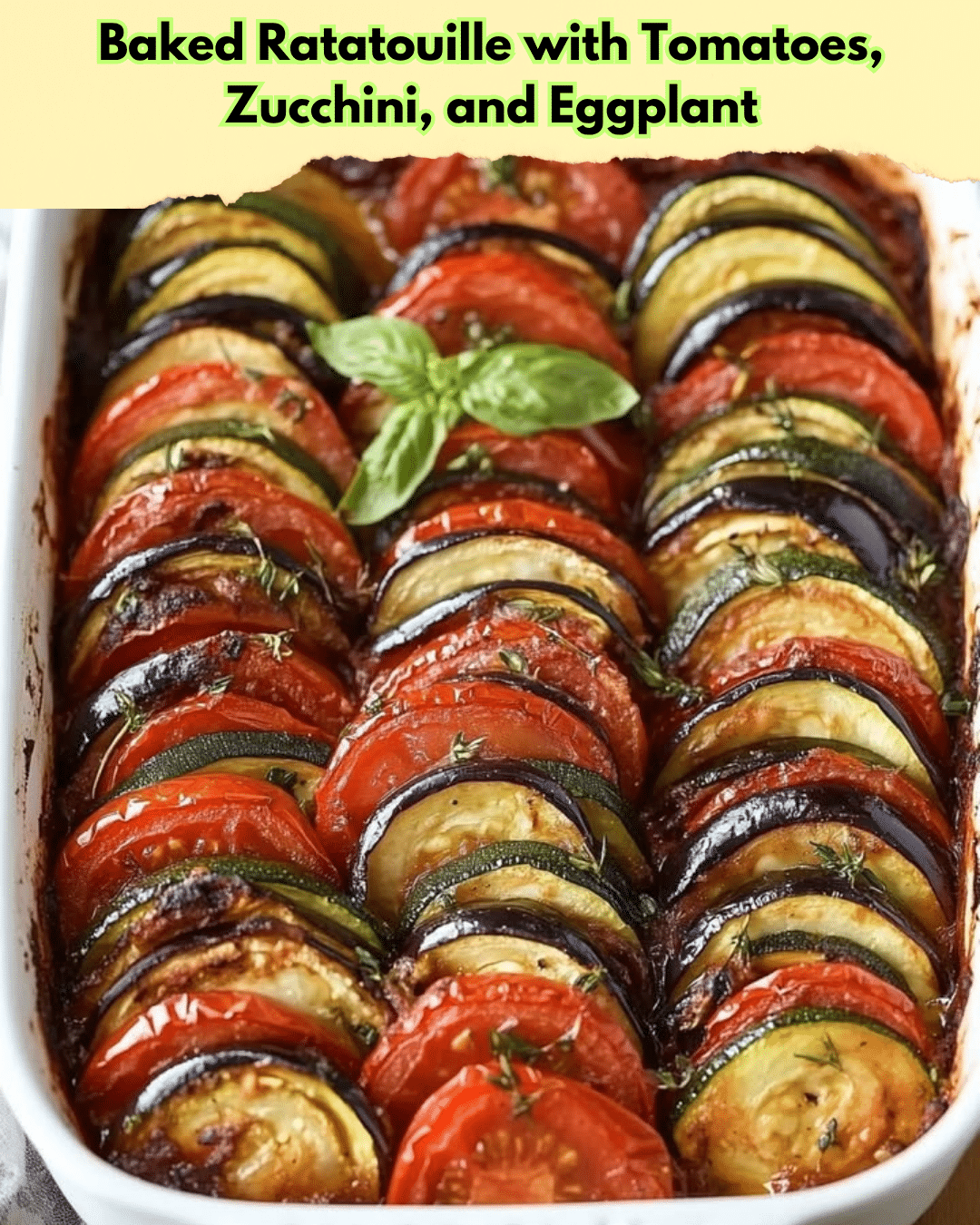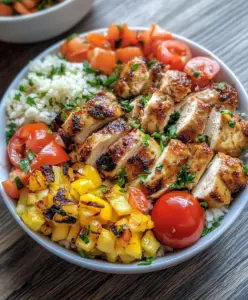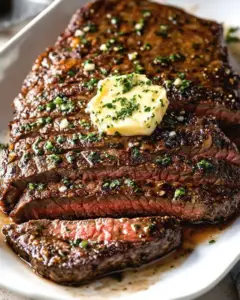Baked Ratatouille with Tomatoes, Zucchini, and Eggplant: An Inviting Dish for Every Occasion
Imagine the sweet aroma of fresh vegetables wafting through your kitchen, as layers of zucchini, tomatoes, and eggplant meld together in a perfectly baked ratatouille. This dish transcends typical vegetable fare, offering a symphony of flavors that capture the essence of Mediterranean cuisine. Each bite delivers a melody of tender, caramelized vegetables, perfect for any meal—a testament to the dish’s versatility and universal appeal.
Crafted with simple, fresh ingredients, our baked ratatouille is not just a recipe; it’s an experience. Whether you’re hosting a dinner party or enjoying a cozy night at home, this dish is sure to impress. The vibrant colors and harmonious flavors are an artistic expression in cooking, bringing joy and satisfaction with every bite.
Quick Recipe Highlights
- Flavor Profile: A perfect balance of sweetness from tomatoes and the earthy undertones of eggplant, complemented by the freshness of zucchini.
- Texture: Experience the delicate melt-in-your-mouth texture of well-cooked vegetables, with a gentle crisp from baking.
- Aroma: Enticing herbal aroma from the blend of basil and oregano, intertwining with the subtle sweetness of roasted vegetables.
- Visual Appeal: A colorful medley, beautifully arranged in layers, inviting with its vibrant hues of red, green, and purple.
- Skill Level Needed: Intermediate—requires careful slicing and layering, but the cooking technique is straightforward.
- Special Equipment: A mandoline for even slicing, and a casserole dish to allow for even baking and presentation.
Recipe Overview
- Difficulty Level: Medium—requires precision in slicing and arranging, yet straightforward in concept.
- Category: Perfect for mains or sides, often served at dinner but flexible enough for lunch gatherings.
- Cuisine: Embodies the essence of Provençal French cuisine, deeply rooted in rustic and hearty Mediterranean flavors.
- Cost: With common vegetables and herbs, this dish is budget-friendly while delivering gourmet appeal.
- Season: Ideal for late summer and fall when tomatoes and zucchini are in their prime.
- Occasion: Suitable for everyday meals, festive dinners, or as a comforting dish on a chilly evening.
Why You’ll Love This Recipe
The Baked Ratatouille with Tomatoes, Zucchini, and Eggplant tantalizes your palate with its rich, hearty flavor that’s packed in wholesome vegetables. Each ingredient contributes a unique texture, adding depth to each mouthful. Caramelized edges of the vegetables bring a slight crunch, offsetting the tenderness that melts in your mouth.
Preparation is a breeze and ideal for busy weeknights or lazy weekends. With just a few fresh ingredients readily found at any market, it requires little time to assemble and bakes beautifully unattended. This recipe is perfect for both seasoned cooks and culinary newcomers looking to expand their repertoire.
The nutritional advantages of this dish are immense. Packed with fiber, vitamins, and antioxidants, the vegetables offer healthful nourishment with every bite. It caters to vegan diets effortlessly, making it an inclusive choice for gatherings of varied dietary needs.
Socially, this dish is a winner. Its vibrant presentation and robust flavors make it a conversation starter at dinner parties, easily doubling as a main or colorful side dish. It’s ideal for shared dining experiences, allowing friends and family to gather around and enjoy a shared culinary delight.
In terms of cost, the ingredients are not only easily accessible but also budget-friendly. You’ll find that a small expenditure at the grocery store results in a generous and fulfilling dish, making it a cost-effective choice for lavish flavor.
Historical Background and Cultural Significance
Originating from the Provence region of France, ratatouille is a humble dish that has risen to culinary fame. Traditionally, this is a peasant meal, a reflection of using what’s bountiful from the garden. Its roots in French cuisine spotlight simple, local ingredients coming together to create something extraordinary.
Culturally, ratatouille is emblematic of the Mediterranean diet and lifestyle—focused on fresh, seasonal produce, and hearty, nourishing meals. Each ingredient’s role showcases agricultural significance, and together they weave a story of regional bounty and the philosophy of simple, healthful cooking.
Throughout the years, ratatouille has evolved, adapting to modern tastes and cooking techniques. While initially a stovetop stew, the baked version offers a contemporary twist with intensified flavors from roasting, reflecting updated culinary techniques.
Globally, variations have emerged that incorporate local vegetables and seasoning, testament to its versatility and appeal. Whether layered and baked or simmered in a pot, each version embraces the same core principles: melding flavors and delivering comfort in every bite.
Ingredient Deep Dive
**Tomatoes**: Known for their vibrant red color and luscious juice, tomatoes are a key ingredient that contributes to the dish’s sweet-tangy foundation. Rooted in ancient Aztec culture, these fruits have traveled through history, ending up as a cornerstone of Mediterranean flavor. Packed with vitamins A and C and lycopene, tomatoes benefit heart health and offer an antioxidant punch. Choose firm, ripe tomatoes for best flavor, and store them at room temperature to preserve their taste. Substitute with canned tomatoes if fresh are unavailable, for a concentrated flavor.
**Zucchini**: Zucchini, a summer squash, brings a mild, refreshing taste and a smooth texture that complements the heartier ingredients. Originating in the Americas but cultivated widely in Italy, these versatile vegetables have become a staple in many diets. Rich in potassium and vitamin C, zucchini aids in reducing blood pressure while supporting immune function. Opt for smaller sizes for tenderness, storing them in the refrigerator’s crisper drawer. If unavailable, yellow squash makes an excellent substitute, providing a similar texture and flavor.
**Eggplant**: Eggplants are prized for their deep purple hue and complex, earthy flavors. A traditional symbol of Mediterranean cooking, eggplants bring depth and a creaminess when cooked. Nutritionally, they offer fiber, vitamins B1 and B6, and antioxidants like nasunin. Select smooth, shiny eggplants, ensuring they are firm to the touch, for optimal taste. Avoid storing in cold, as it can cause softening; keep them in a cool, dry place instead. Substitute with mushrooms for an umami punch if necessary.
**Herbs**: Fresh basil and oregano are integral, contributing an aromatic, peppery essence to the dish. Basil, closely tied to Italian cuisine, infuses a slightly sweet, fragrant quality, while oregano, slightly bitter, adds depth. Both herbs have essential oils that offer anti-inflammatory benefits. When fresh herbs aren’t available, dry versions can substitute at a reduced quantity, preserving the herbaceous vibrancy of the recipe.
Common Mistakes to Avoid
- Overcooking the vegetables, which can result in a mushy texture. Monitor carefully during baking.
- Not seasoning enough—ensure each layer is seasoned to avoid blandness.
- Slicing unevenly, which might cause inconsistent cooking. Aim for uniformity using a mandoline.
- Using a small dish that crowds the vegetables, preventing caramelization. Opt for a larger, shallow baking dish.
- Skipping the resting period, as it helps meld flavors. Allow the dish to sit for a few minutes before serving.
- Using underripe or overripe vegetables, which affects the dish’s texture and taste. Freshness is key.
- Ignoring oil quantity—too little doesn’t bring out the vegetables’ flavors; too much can make it greasy.
- Failing to preheat the oven, leading to uneven cooking. Ensure consistency by preheating.
- Not layering properly, which can affect the dish’s integrity. Maintain organized layers for best results.
Essential Techniques
**Layering Precision**: The success of a baked ratatouille lies in its layered presentation, ensuring even cooking and visually appealing servings. Master this by thinly slicing vegetables uniformly, carefully arranging each row in overlapping patterns. This technique melds flavors as they bake, creating harmony in each bite. A mandoline slicer can be a helpful tool to keep slices even.
**Roasting for Flavor Enhancement**: Roasting the vegetables enhances their natural sugars and flavors, adding depth often missing in stewed versions. This technique caramelizes edges while keeping the insides soft and juicy. Watch for visual cues like browning edges and softening textures to prevent overcooking.
**Balancing Flavors**: Achieve a perfect balance through a judicious use of salt, herbs, and olive oil. Each ingredient should support rather than overwhelm, so taste as you go and adjust seasoning before baking. Don’t forget fresh herbs added toward the end for a final burst of flavor.
Pro Tips for Perfect Baked Ratatouille
1. Aim for consistent vegetable slicing to ensure even baking and a tidy presentation. Use a mandoline for precision.
2. The preheating oven is vital for maintaining cooking consistency—wait until it’s fully heated before placing the dish inside.
3. Add a touch of vinegar or lemon juice before serving for a vibrant pop that enhances the flavors.
4. Allow the ratatouille to rest post-baking; flavors deepen as it sits, making it perfect for make-ahead meals.
5. Experiment with spices like red pepper flakes for a subtle heat or herbs like thyme for more earthiness.
6. When assembling layers, don’t compact them too much; air circulation during baking helps achieve those golden edges.
Variations and Adaptations
Depending on seasonality, adapt ratatouille by incorporating available produce. Winter squash or sweet potatoes can replace or accompany traditional vegetables during cooler months, adding warmth and heartiness. Similarly, in spring, asparagus or fresh peas can be combined for a lighter interpretation.
For dietary needs, this recipe lends itself well to low-carb adaptations by reducing starchy vegetables and focusing on green alternatives. Vegan cheese can also serve as an excellent topping, enhancing the creamy texture without dairy.
Flavor-wise, infuse international twists by adding spices such as cumin or coriander for a Middle Eastern flair, or incorporate curry powder for an Indian-inspired ratatouille. Each variation offers a new dimension of taste, making the dish endlessly adaptable.
Presentation-wise, consider individual ramekins for sophisticated serving at dinner parties, providing both portion control and an elegant touch. Stacking vegetables in spiral formations within these small vessels can add an artistic, eye-catching visual.
Serving and Presentation Guide
For plating, serve ratatouille either in its baking dish as a centerpiece or carefully spoon portions onto plates for a more elegant presentation. Garnish with fresh basil leaves or a drizzle of balsamic reduction to elevate visual appeal and taste.
Traditionally, ratatouille can be accompanied by crusty bread to soak up juices, enhancing the meal’s heartiness. Alternatively, serve alongside grilled meats or as a topping for polenta for a modern twist.
In terms of temperature, allow it to cool slightly; serving warm highlights the dish’s natural flavors while retaining its comforting nature. For portioning, consider the meal context—larger servings for a main, smaller scoops as a side.
Wine and Beverage Pairing
Pairing wine with ratatouille offers choices that complement its intricate flavors. Opt for a light red such as a Syrah or a robust rosé to enhance the vegetables’ sweetness and earthiness.
For non-alcoholic options, consider herbal teas like hibiscus, which mirror the dish’s aromatic qualities, or try sparkling water with a splash of citrus to cut richness while refreshing the palate.
Serve wines slightly chilled where applicable, aligning with the warm temperature of the dish, ensuring they don’t overpower the subtle flavors of the ratatouille. This balance brings out the best in both beverage and food.
Storage and Shelf Life
Store leftover ratatouille in an airtight container in the refrigerator, where it stays fresh for up to 5 days. This allows the flavors to meld, often improving with each passing day. For longer storage, the dish can be frozen for up to 3 months.
When reheating, use an oven or stovetop to preserve texture, favoring gradual warming to prevent sogginess. Avoid microwaves, as they may alter the texture unfavorably, creating uneven hot patches.
Ensure frozen ratatouille is defrosted appropriately before reheating, checking for any signs of spoilage or freezer burn, which might indicate a compromised flavor.
Make Ahead Strategies
Ratatouille’s reputation as a make-ahead dish is well-earned. Prepare vegetables and assemble the dish a day in advance, storing covered in the refrigerator for optimal flavor fusion. Bake just before serving for a fresh-out-of-the-oven taste.
During preparation, separate any elements meant to retain crunch until serving; these can be added closer to mealtime, preserving texture integrity. For example, fresh basil or crumbled cheese can be incorporated after reheating for a fresh finish.
While prepared in advance, be mindful of overbaking, as reheating will continue the cooking process. Prioritize quality over speed, ensuring this nuanced dish remains delicious even when served later.
Scaling Instructions
When halving this recipe, maintain proportions by adjusting seasoning and herbs, scaling back equally to ensure flavor consistency. Smaller casserole dishes suffice for cooking, reducing bake time slightly to account for changed volume.
Doubling or tripling serves a crowd, yet requires attention to layering, as overcrowded bakes may affect texture. Large, shallow trays allow better heat distribution, ensuring vegetables still caramelize and cook evenly.
Adjust equipment by using wider, deeper baking dishes for increased quantity, while timing might extend slightly to accommodate enhanced volume. Monitor closely, occasionally checking for doneness toward the end.
Nutritional Deep Dive
A typical serving of baked ratatouille is rich in vitamins and low in calories, thanks to its vegetable base. Tomatoes contribute crucial nutrients like vitamin C and lycopene, known for heart health benefits. Eggplants provide fiber and antioxidants, supporting digestion and cellular health.
Micronutrient analysis reveals good potassium levels from zucchini and tomatoes, aiding in blood pressure regulation. Health benefits are amplified by heart-healthy olive oil and inflammation-reducing herbs, aligning with dietary goals.
As a dish embracing portion flexibility, manage serving sizes to suit dietary needs, making ratatouille accommodating whether you aim for weight maintenance or nutrition enhancement.
Dietary Adaptations
**Gluten-Free**: Naturally gluten-free, ratatouille requires no modifications for this dietary need.
**Dairy-Free**: Maintain with olive oil, avoiding cheeses, or opt for plant-based cheese alternatives for a creamy finish.
**Vegan**: Requires no animal products, making it inherently vegan-friendly and full of plant-based goodness.
**Low-Carb**: Focus on lower-carb, non-starchy vegetables, reducing factors like potatoes if included.
**Keto**: To match ketogenic macros, consider adding fats like avocado oil or nuts for richness, ensuring the meal fits macro guidelines.
**Paleo**: Aligns well by maintaining whole, natural ingredients. Verify all components adhere to paleo principles.
**Low-FODMAP**: Utilize zucchini and eggplant, giving priority to elements that comply with dietary restrictions and managing tomato usage.
For any adaptation, prioritize ingredient quality. Understanding substitutions ensures the flavor and texture remain satisfying while accommodating dietary constraints.
Troubleshooting Guide
When texture issues occur, such as sogginess, reduce liquid content or adjust the bake time, testing halfway through to confirm inroads toward desired consistency. Encountering an imbalance in flavor typically resolves with seasoning adjustments, ensuring salt enhances rather than dominate the dish.
Temperature problems arise from uneven heating, often fixable by adjusting the oven rack for uniform exposure. When facing equipment challenges, reach for alternatives if a mandoline isn’t accessible. Aim for uniformity with a sharp knife.
Ingredient substitutions align with dietary necessities, searching for similarity in flavor and texture. Timing concerns benefit from vigilant observation, making allowances for variables like altitude affecting bake duration.
Recipe Success Stories
Testimonials from fellow food enthusiasts spotlight the baked ratatouille’s ability to draw “oohs” and “aahs” from diners young and old. A reader shared their success at a family gathering, where the beautiful presentation and hearty taste stole the show as a main course.
Another adaptation story highlighted the use of seasonal fall vegetables, bringing harvest warmth and comfort to a Thanksgiving spread. Photography from our community often captures the colorful, artistic layering that defines this dish, inspiring others to replicate its beauty.
Even broadening its appeal, suggestions for adding ground spices have emerged, supplementing the herbaceous backdrop with subtle heat, showcasing this dish’s flexibility and international appreciation.
Frequently Asked Questions
Can I prepare baked ratatouille ahead of time?
Absolutely! This dish holds up wonderfully when made in advance. Prepare it fully, store it in the refrigerator, and reheat it in the oven before serving. The flavors often deepen as they rest, making it even tastier the next day.
What can I pair with ratatouille for a complete meal?
Ratatouille is versatile, and while it can stand alone, it pairs excellently with grilled meats, a side of rice, or even whole grain bread to soak up the juices. Consider adding a green salad for balance.
Can I freeze leftovers of baked ratatouille?
Yes, freeze leftovers in an airtight container for up to three months. Just thaw in the fridge overnight and reheat in the oven, maintaining the integrity of its texture and flavor.
How can I make the layers stay intact when serving?
Allowing the dish to cool slightly after baking helps firm it up, ensuring clean slices. Use a sharp knife or a spatula for neat servings. For better results, bake the ratatouille in broader dishes with more surface area.
What if I don’t have fresh herbs?
Dry herbs can substitute fresh; just use half the quantity, as dried herbs are more concentrated. They’ll still impart robust flavors, although fresh herbs are ideal for fresh, vibrant results.
Are there any low-fat adaptations for this recipe?
Yes, reduce olive oil and rely more on cooking sprays or broth to prevent sticking. The dish naturally contains low-fat vegetables, so it remains light and nutritious.
What’s the best way to reheat ratatouille?
The oven or stovetop methods work best. For the oven, cover the dish lightly with foil and reheat at a lower temperature to prevent overcooking. This retains the original taste and texture.
Can I make this dish without an oven?
Yes, it can be adapted to a stovetop method with a covered pan, sautéing vegetables first, then simmer until tender, though you may miss the roasted flavor and caramelization characteristic of the baked version.
How do I prevent ratatouille from becoming watery?
Proper layering and using a high-quality baking dish can help. Avoid adding excess liquids, and bake uncovered to allow moisture to evaporate, helping maintain texture without a soggy result.
How do I customize seasoning?
Seasoning can be individualized based on preference. Consider adding garlic for depth or red pepper flakes for a hint of heat. Taste the dish as you prepare and adjust seasoning incrementally.
Additional Resources
Delve into related Mediterranean recipes to complement your meal, like mouth-watering bruschetta or garlic-infused hummus, bridging cultural cuisines effortlessly. Technique guides on vegetable slicing ensure precision, accompanying this ratatouille perfectly.
For ingredient deep dives, explore profiles of classic herbs and spices that enhance this dish, learning their histories and culinary roles. Equipment recommendations featured include alternatives for the expected kitchen tools, ensuring your ratatouille is executed effortlessly regardless of resources.
With seasonal variations outlined, discover ways to reinvent your baked ratatouille, adapting it to spring or fall produce, offering endless creativity and satisfaction on your dining table.
Print
Baked Ratatouille with Tomatoes, Zucchini, and Eggplant
Description
A classic French vegetable dish that’s oven-baked to bring out rich flavors.
Ingredients
For the Crust:
- 1 eggplant, sliced
- 2 zucchinis, sliced
- 3 tomatoes, sliced
- 1 onion, sliced
- 2 cloves garlic, minced
- 2 tablespoons olive oil
- Salt and pepper to taste
- Fresh basil for garnish
Instructions
1. Prepare the Crust:
- Preheat the oven to 375°F (190°C).
- In a baking dish, layer slices of eggplant, zucchini, and tomatoes. Sprinkle onion and garlic over the top.
- Drizzle olive oil over the layers and season with salt and pepper. Cover with foil and bake for 30 minutes.
Notes
You can customize the seasonings to taste.




